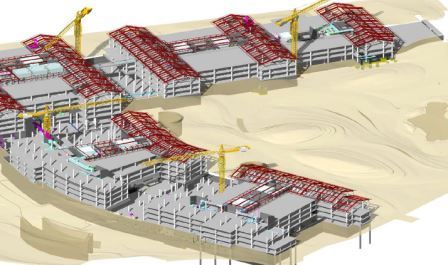

Printable PDF version
Subscribe to our newsletter
Lean but not Mean
Big Data in Construction
Prediction Problems
Construction
Management Specialists
111 Pine Street, Suite 1315
San Francisco, CA 94111
(415) 981-9430 (San Francisco office)
6518 Lonetree Blvd., Suite 164
Rocklin, CA 95765
(916) 742-1770 (Sacramento office)
600 B Street
San Diego, CA 92101
(619) 814-6793 (San Diego office)
8538 173rd Avenue NE
Redmond, WA 98052
(206) 571-0128 (Seattle office)
2063 Grant Road
Los Altos, CA 94024
(650) 386-1728 (South Bay office)
7083 Hollywood Blvd., 4th Floor
Los Angeles, CA 90028
(424) 343-2652 (Los Angeles, CA office)
1a Zoe House, Church Road, Greystones
Wicklow, A63 WK40, Ireland
+353 86-600-1352 (Europe office)
www.TBDconsultants.com
Lean Construction is becoming a popular term, but different companies may be implementing it in different ways. In this article we look at at what it is that makes construction Lean.
Construction projects have always produced voluminous quantities of data in the form of drawings and specifications, contracts, RFIs, bulletins, reports, etc., etc., but traditionally the data has ended up in filing cabinets or storage rooms and their contents effectively lost. As these documents moved into digital formats it became easier to search for relevant information, but even digital documents have normally been stored locally, maybe on someone’s personal computer or, at best, on a company network, and sharing that information with others has been somewhat problematic. Another challenge has been that the growing mountain of digital data has made it hard to search through. Having a lot of data, assuming that it is realistic in its content, is good, but how to find the needle you are looking for in what may be multiple haystacks has been the problem.

The term Big Data relates to extremely large data sets that are being generated continuously, and we are seeing that in construction. That data may be structured, like drawing sets and RFIs, or unstructured, as with emails. The other part of the Big Data definition is that the data can be analyzed to reveal patterns and insights that can improve decision making.
Thankfully, modern software, often cloud-based, is making the sharing and analysis of the data feasible and effective. At the same time, the mountain of data is growing exponentially as new technologies, such as drones and 3-D laser scans, are making increasing volumes of data available. Fortunately, AI systems thrive on masses of data, so they can be utilized in carrying out the required searching and analysis. As data gets shared among the parties involved in a construction project, the more potentially useful it becomes. If each company keeps its data in its own silos, it is less likely to be found by the person who can use it, who may be in another part of the design or construction team.
At the conception of a project, the building owner and his/her advisors can utilize data on their customer or user preferences, along with traffic and environment data, to determine the best type of building to erect and help locate it in the most advantageous spot. Designers can assist by utilizing data from the planning authorities to see what massing it can have in different locations, and records of similar projects can help flesh-out the concept and provide preliminary cost information to compare with the owner’s budget. Utilizing AR (Augmented Reality) to display the potential project can let the owner see what the building would be like viewed against the actual surroundings.
Once it gets into design, the users’ preference data, showing what is of value to them, and data from previous projects along with building codes, etc., help pull the design into shape. BIM software becomes a repository for data related to the particular project, and BIM goes well beyond just 3-D design. Schedule information makes it 4-D, and cost information grows it to 5-D, with the result that changes in design can instantly show potential effects on schedule and project cost. BIM systems can also incorporate product information, complete with maintenance requirements, that can provide useful data throughout the life of the building. The simulations such systems provide can identify risks and help work out how to mitigate them.
During the construction process, data from drones and other sensors can help identify potential safety issues, and monitor actual work completed against the schedule to highlight problems. Such real-time data can also show how the construction site is being utilized and lead to suggestions for making the site more efficient and less wasteful of materials and plant and labor resources. This results in reductions in schedule and costs. Contractors can also analyze results from past projects to see which types of projects have produced the best profit margins for them, helping them decide which jobs to bid on.

Once the building is complete, sensors within the building, along with maintenance records and the BIM data, can identify potential areas of concern that may need maintenance or possibly training for the users in the operation of building features, such as HVAC controls.
In short: Big Data means that the decisions needed at every stage in the building’s life-cycle can be based on solid information rather than something close to guesswork.
Housing's down ... now it's not; Stock Market's up ... now it's dropping; Interest Rates are rising ... now they're not. What can we glean from these swings and turbulence?
Design consultant: Katie Levine of Vallance, Inc.